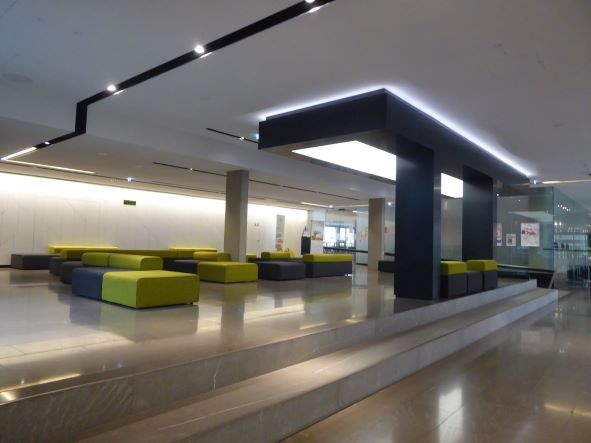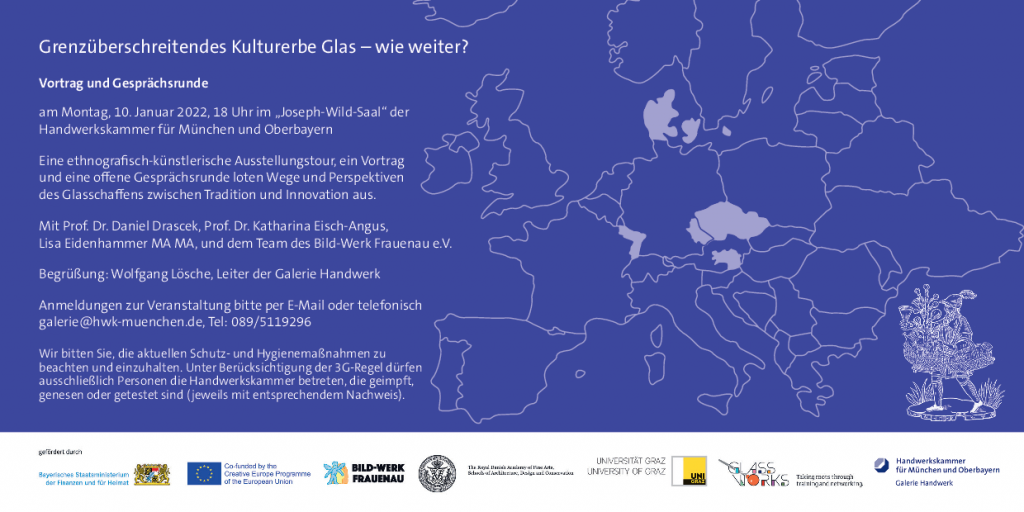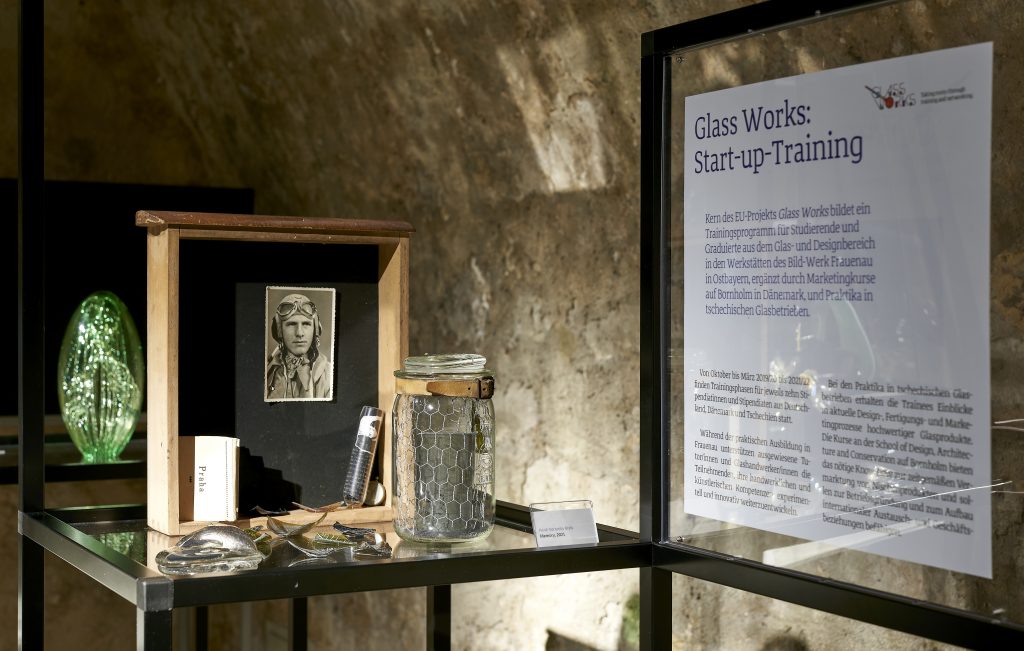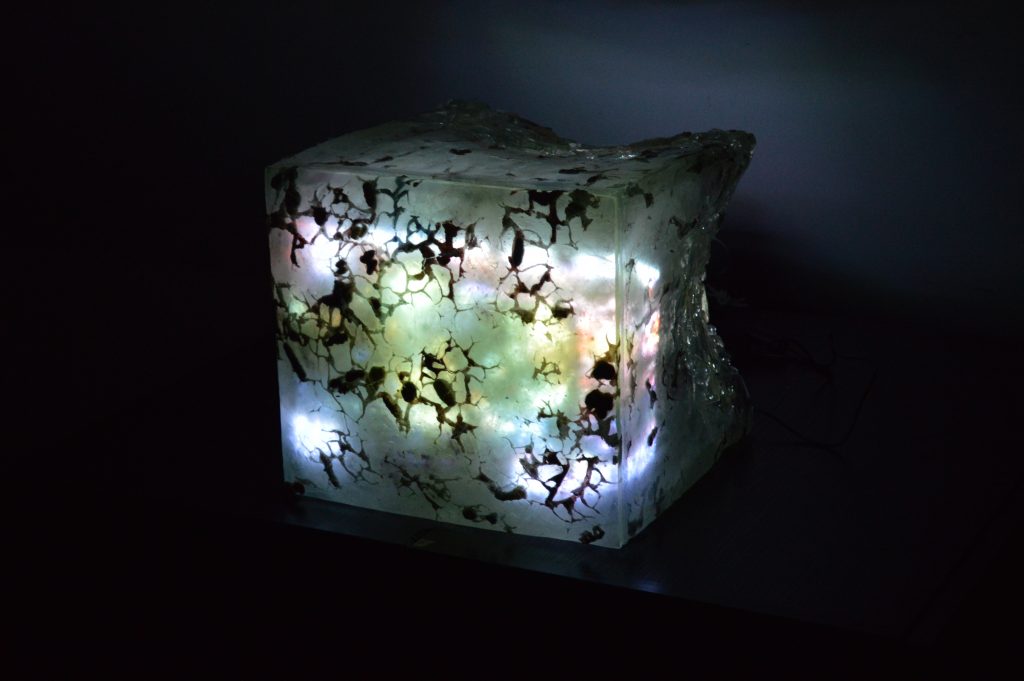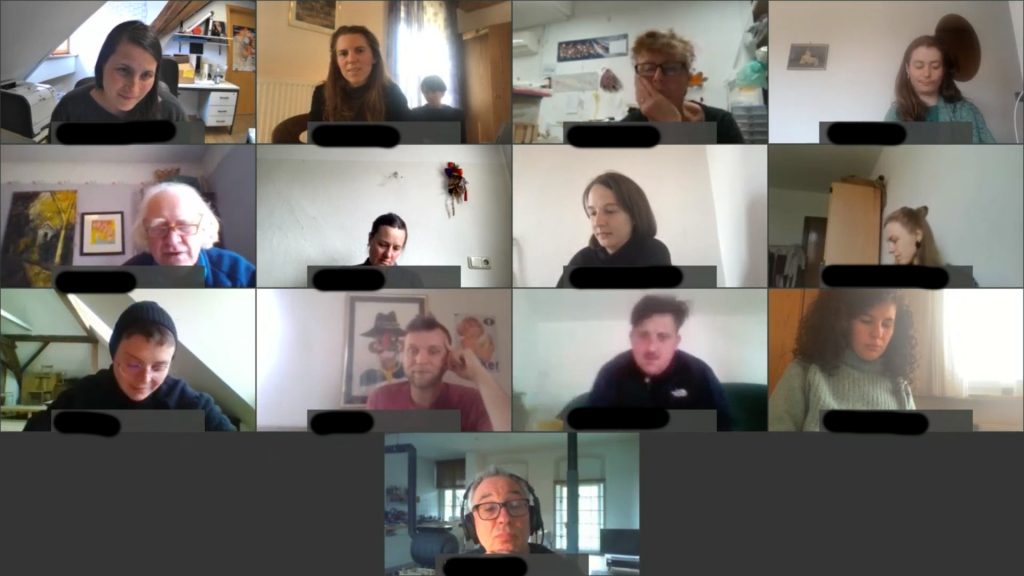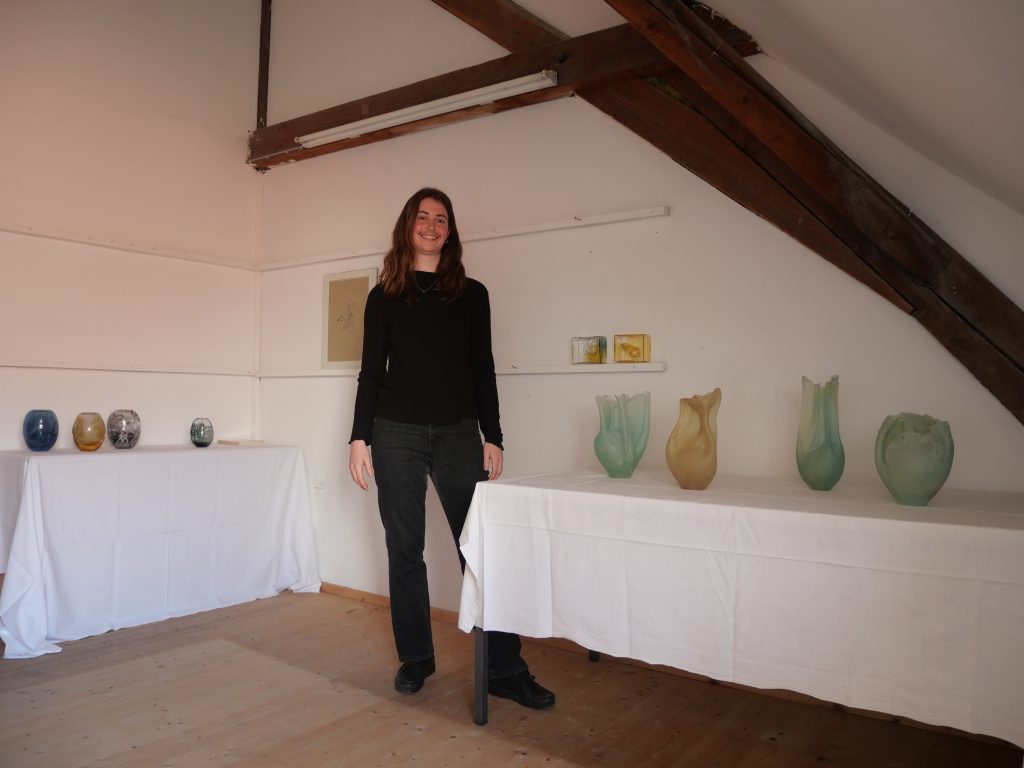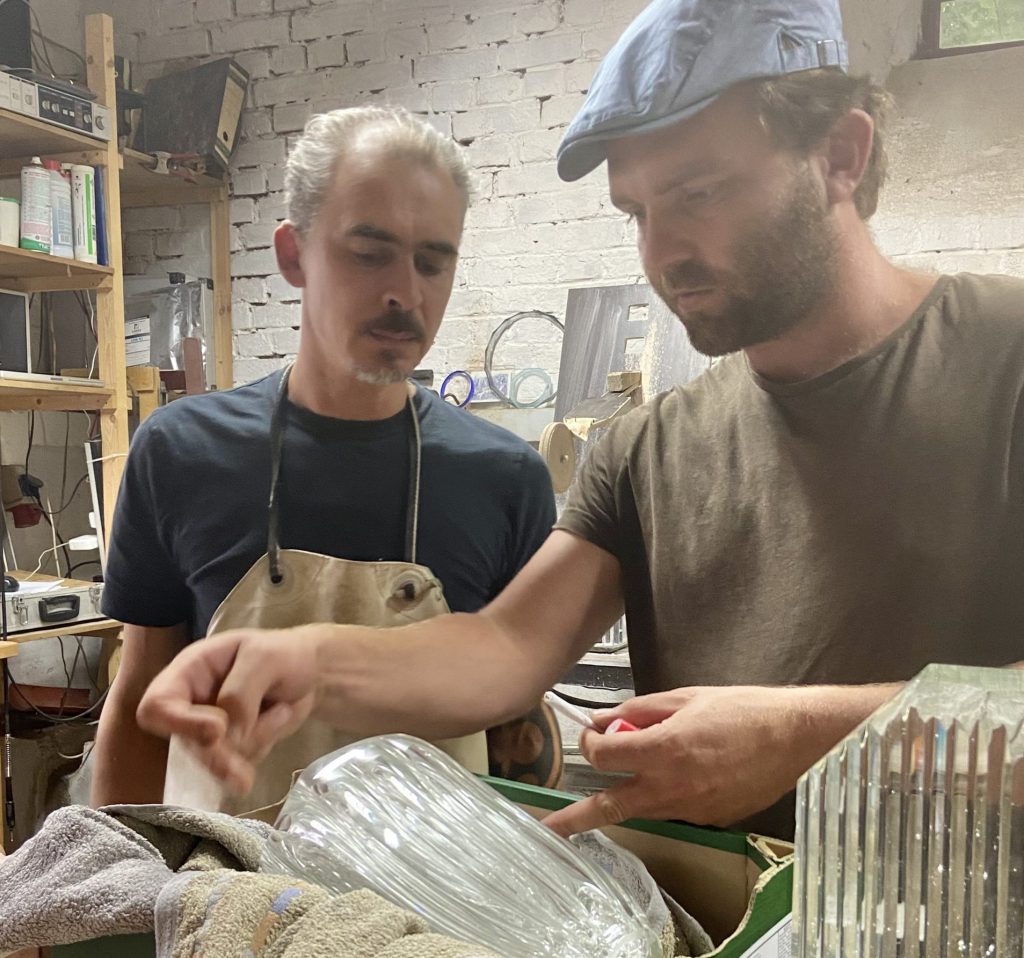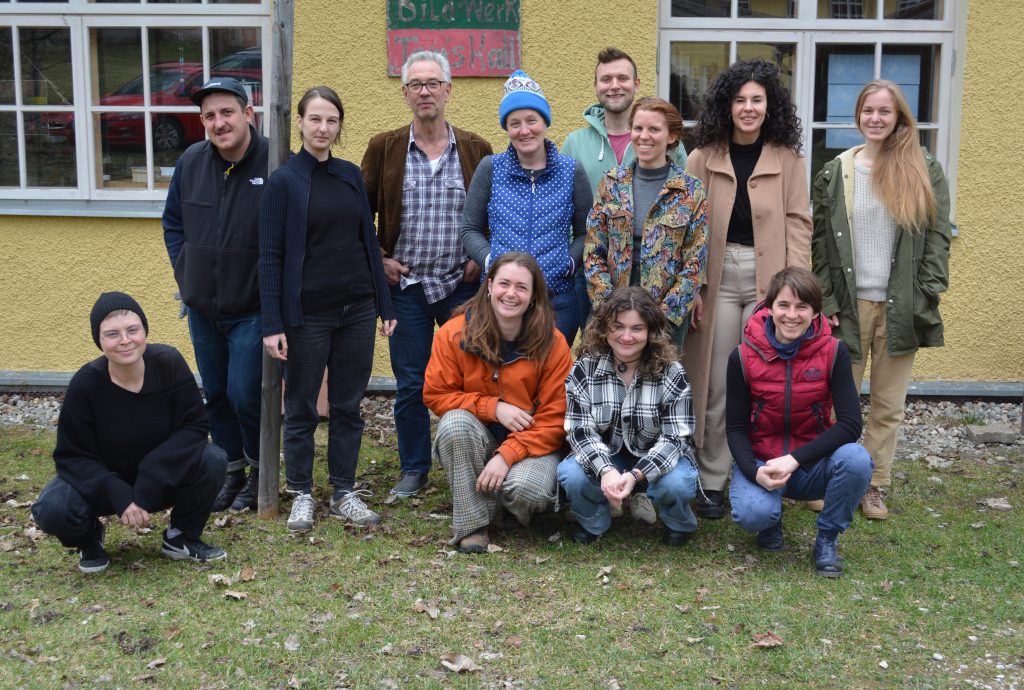Glass Works Goes Industry: The Styrian Chamber of Commerce
In the spring of 2022, our glass-historical exhibition returned to where it was created in 2018 – 2020: to Styria in Austria, which is portrayed as one of five glass landscapes in the exhibition. Styria and glass? In fact, in this old mining and industrial region we encounter a very distinct glass tradition. In the present, this is expressed in the tension between the Stoelzle Group as a global player, which has a highly automated glass production site in Köflach in Styria, and active arts and crafts studios.
First of all, the exhibition was a guest from March 1st to April 28th in the representative foyer of the Styrian Chamber of Commerce in Graz. “A pleasant art exhibition, a bit of distraction in the pulsating heart of the economy, which is faced with completely different, global challenges?”
This was an expectation at the opening, on invitation of the President of the Chamber of Commerce, Dr. Karl-Heinz Dernoscheg on April 4th, and greeted by Georg Feith, GEO of the Stoelzle Group, on behalf of the Styrian glass industry. However, during the guided tour of the exhibition with Katharina Eisch-Angus, there was a lively discussion about how productive glass is as a material in the dialogue between art and business. The spirit of the age and the economy are reflected in glass. With art, design, craftsmanship and manufacturing interacting, glass becomes an innovative economic factor.

